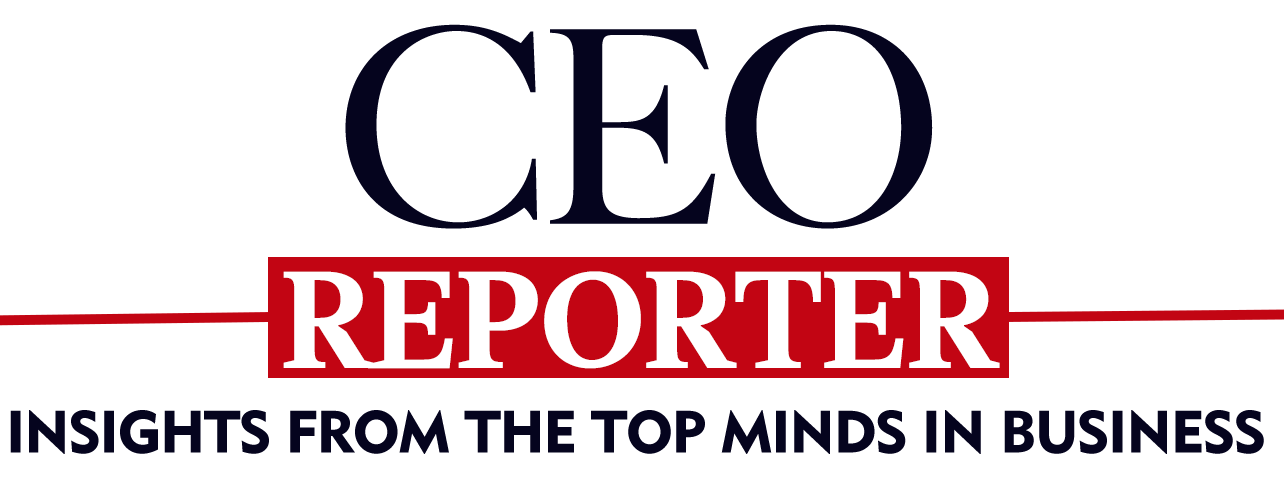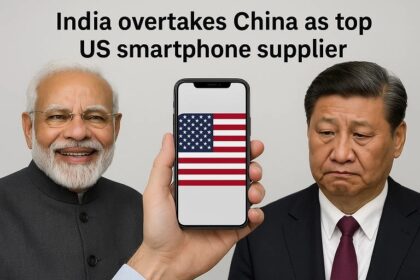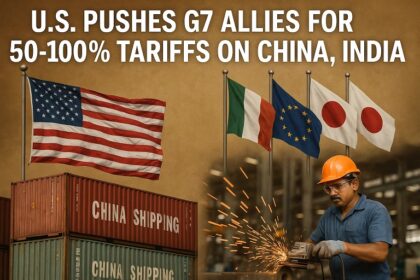Washington, DC, August 10, 2025 – In a bold address at an AI Summit in Washington on July 23, 2025, US President Donald Trump called on major technology companies, including Google, Microsoft, and Apple, to cease hiring workers from India and other foreign countries, urging them to prioritize American talent instead. The directive, part of his broader “America First” agenda, has sparked global debate about its implications for the tech industry, US-India relations, and the future of global talent pipelines. While no formal policy changes have been enacted, Trump’s remarks signal a push toward tech nationalism that could reshape hiring practices and international collaborations.
A Fiery Call at the AI Summit
Speaking to Silicon Valley leaders, Trump criticized US tech firms for their reliance on foreign labor, particularly from India, accusing them of exploiting American freedoms while outsourcing jobs. “Many of our largest tech companies have reaped the blessings of American freedom while building their factories in China, hiring workers in India, and stashing profits in Ireland,” Trump declared. “Under President Trump, those days are over.” He framed the move as essential for reclaiming US leadership in artificial intelligence (AI), emphasizing a “new spirit of patriotism and national loyalty in Silicon Valley and beyond.”
Trump’s remarks accompanied the signing of three AI-focused executive orders aimed at bolstering domestic innovation. The first, titled “Winning the Race,” outlines a national strategy to accelerate AI infrastructure, such as data centers, by easing regulatory hurdles. The second mandates that AI systems developed with federal funds remain politically neutral, banning what Trump called “woke” AI models. The third promotes American-made AI exports, encouraging end-to-end development within US borders. These orders underscore Trump’s vision of reducing dependence on foreign talent and supply chains, particularly in strategic sectors like AI.

India’s Pivotal Role in US Tech
India has long been a cornerstone of the US tech workforce. In fiscal year 2024, Indian nationals secured approximately 74% of the 386,000 H-1B visas granted, with major IT firms like Infosys, TCS, Wipro, and Cognizant among the top petitioners. These visas enable skilled professionals, primarily in software engineering and data science, to work on US projects. Additionally, Indian students, constituting 27% of international students in US universities (over 420,000 in 2023), often transition to the workforce via Optional Practical Training (OPT) before pursuing H-1B status.
US tech giants have established significant engineering hubs in cities like Bengaluru and Hyderabad, leveraging India’s cost-effective, high-quality talent pool. A Brookings Institution study highlighted that over half of top AI
researchers in the US are foreign-born, with a significant portion from India, contributing to advancements in AI, cloud computing, and cybersecurity. Companies like Microsoft, led by Hyderabad-born CEO Satya Nadella, and Google, with Chennai-born Sundar Pichai at the helm, exemplify India’s influence in Silicon Valley leadership.
Trump’s call to halt hiring from India targets this deep-rooted reliance, arguing it disadvantages American workers. He pointed to the domestic talent pool, bolstered by STEM graduates from US universities, as sufficient to meet industry needs. “We have the best minds right here in America,” he stated, urging tech giants to invest in local training programs and prioritize US citizens.
Economic and Diplomatic Ripples
The remarks come at a time of robust US-India relations, underscored by India’s recent space milestones, such as the July 30, 2025, launch of the NASA-ISRO NISAR satellite and the upcoming Bluebird mission, a 6,500 kg US communication satellite to be launched by ISRO in 2026. These collaborations highlight India’s growing role as a strategic partner in technology and space. Trump’s directive, however, risks straining this partnership, particularly as India contributes significantly to US tech innovation and economic growth.
Economically, Indian IT firms generate billions in revenue for the US, with companies like TCS and Infosys employing thousands of Americans alongside their Indian workforce. A 2023 NASSCOM report estimated that Indian IT services contribute $80 billion annually to the US economy through direct investments, taxes, and job creation. Restricting Indian hiring could disrupt these supply chains, increase costs for tech firms, and potentially slow innovation in AI and other fields where Indian engineers excel.
Diplomatically, India’s government has not officially responded, but analysts predict concern in New Delhi, given the potential impact on Indian professionals and bilateral trade. India’s IT sector, employing over 5 million people, relies heavily on US contracts, and any restrictive US policies could prompt retaliatory measures or shifts toward other markets like Europe or Southeast Asia.
Industry and Political Reactions
Tech industry leaders have expressed cautious concern. While no major company has publicly commented on Trump’s remarks, insiders suggest firms like Microsoft and Google, with extensive operations in India, are assessing the implications. The H-1B visa program, already capped at 85,000 annually (including 20,000 for advanced-degree holders), faces scrutiny, with Trump previously advocating for stricter merit-based criteria during his first term. Any new restrictions could exacerbate talent shortages, as US tech firms already struggle to fill specialized roles in AI and machine learning.
US political reactions are divided. Supporters of Trump’s stance, including some Republican lawmakers, argue it protects American jobs and counters offshoring. Critics, including Democrats and industry groups like the Information Technology Industry Council, warn that curbing foreign talent could undermine US competitiveness, especially against China, which is aggressively scaling its AI and tech sectors. A 2024 McKinsey report noted that global talent mobility is critical for maintaining the US’s 35% share of the $1.2 trillion AI market.
Potential Policy Pathways
While Trump’s remarks lack immediate legal weight, they signal potential policy shifts. The executive orders signed at the AI Summit do not explicitly address hiring practices but empower agencies like the Department of Homeland Security to review visa programs. Possible actions include tightening H-1B eligibility, increasing wage requirements for foreign workers, or prioritizing US citizens in federal tech contracts. Such measures would align with Trump’s earlier policies, like the 2020 H-1B restrictions, which were partially reversed under Biden.
However, implementing a blanket ban on foreign hiring faces legal and practical hurdles. The H-1B program is governed by complex immigration laws, and tech companies could challenge restrictions in court, citing labor market needs. Additionally, India’s role in US tech is not easily replaced, given its scale, expertise, and cost advantages. A 2025 RAND study estimated that replacing Indian H-1B workers with US equivalents could cost the tech sector $20 billion annually in training and salary adjustments.
Global and Long-Term Implications
Trump’s push reflects broader global trends toward tech nationalism, as nations like China and the EU also prioritize domestic innovation. For India, reduced US opportunities could accelerate its domestic tech ecosystem, with startups in Bengaluru and Hyderabad already attracting $10 billion in venture capital in 2024. However, short-term disruptions for Indian professionals and US firms are likely, particularly if visa restrictions tighten.
For the US, the move risks alienating a key ally while challenging its ability to sustain tech leadership. With China advancing in AI and space—evidenced by its 2025 lunar lander tests and Tianwen missions—the US relies on global talent to stay ahead. Excluding Indian expertise could cede ground in this race, especially as India’s own space and tech sectors gain momentum.
Conclusion: A High-Stakes Balancing Act
President Trump’s call to stop hiring from India marks a pivotal moment in US tech policy, blending economic nationalism with strategic concerns about AI dominance. While aimed at bolstering American jobs, the directive threatens to disrupt a decades-long partnership that has fueled innovation and growth. As India prepares to launch a massive US satellite in 2026, the irony of this moment is stark: a nation poised to propel American technology into space may face barriers in contributing to its digital future. The tech industry, US policymakers, and global partners now face a delicate task—balancing national priorities with the interconnected reality of modern innovation.













